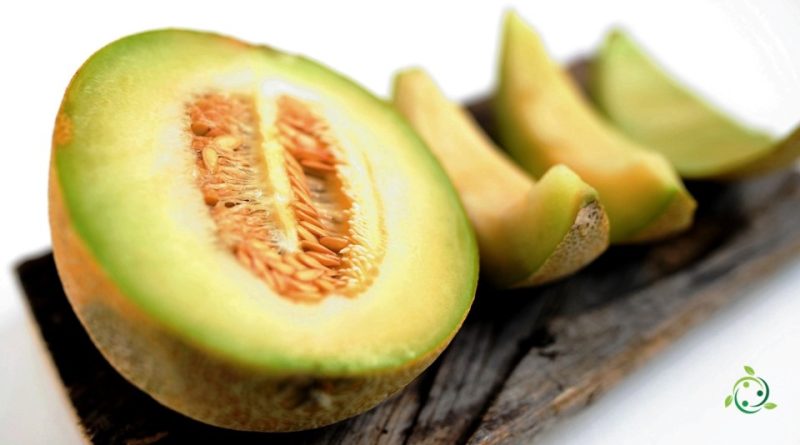Nutritional value of Melon
Nutritional value of Melon
The melon (Cucumis melo L., 1753) is an annual climbing plant of the Cucurbitaceae family.
It is a plant widely cultivated for its edible, sweet and fragrant fruits. Not all melon varieties are sweet.
Characteristics –
The melon is a plant native to Africa and is grown all over the world for its sweet and juicy fruit. The melon is an annual plant that grows like a vine with long climbing stems that can reach several meters in length.
The leaves of the melon are large, palmate and lobed, with serrated edges. The flowers are yellow or white and develop in small clusters along the stems. The plant requires warm temperatures to grow properly and plenty of water.
The melon fruit has a spherical or oval shape, with a smooth and often grooved skin, which can vary in color depending on the variety. The inner flesh of the melon is juicy and sweet, usually orange or yellow in color, depending on the variety. Some melon varieties also have a slightly spicy flavor.
The melon is mainly eaten fresh as a fruit, but it is also used in various culinary preparations, such as fruit salads, juices, smoothies and ice creams. It is a source of vitamins A and C, potassium and dietary fiber.
There are many melon varieties, each with distinctive characteristics in flavor, color, and fruit size. Some of the more common varieties include the Cantaloupe melon, Honeydew melon, Galia melon and Crenshaw melon.
Melon cultivation requires a warm climate, well-drained soil, and proper irrigation. It is generally grown via seeds, which are sown in spring and take around 70-90 days to mature.
Nutritional card –
The melon is a plant which, in addition to its pleasant taste, is a plant that has excellent nutritional characteristics. Below is the approximate nutritional card for 100 grams of melon:
– Calories: 34 kcal
– Protein: 0.8 grams
– Fat: 0.2 grams
– Carbohydrates: 8.2 grams
– Fibers: 0.9 grams
– Sugars: 7.4 grams
– Vitamin C: 36.7 milligrams
– Vitamin A: 338 micrograms
– Vitamin K: 2.5 micrograms
– Potassium: 267 milligrams
– Calcium: 9 milligrams
– Iron: 0.2 milligrams
Note that these values may vary slightly depending on the specific type of melon and growing conditions. Melon is a good source of vitamin C and vitamin A, and also contains a moderate amount of potassium. It’s a low-calorie option and is high in water, making it a refreshing and hydrating choice for summer.
Property –
The melon is a fruit plant grown all over the world for its sweet and juicy fruits. Its particular nutritional properties are reported:
Melon is a good source of vitamins and minerals. Contains vitamin C, vitamin A, vitamin B6, vitamin K, potassium and fiber. It is also low in calories, with around 30-40 calories per 100 grams.
Melon is about 90% water, making it a great choice for maintaining body hydration.
This fruit contains antioxidants such as vitamin C and vitamin A, which help neutralize free radicals in the body and may help reduce the risk of chronic diseases, such as heart disease and some cancers.
Regular consumption of melon can have beneficial effects on health. It can aid digestion due to its fiber content and help maintain digestive health. Additionally, it can contribute to healthy skin, improve eye health, and support the immune system.
There are several varieties of melon, each with its own distinctive characteristics. Some of the more common varieties include the cantaloupe melon, honeydew melon, and galia melon.
The melon is mainly eaten raw as a fresh fruit. It can be used in salads, smoothies, sorbets and fruit juices. In some cuisines, melon is also used in savory dishes or paired with ham or cheese.
However, it is important to note that the specific melon properties may vary slightly depending on the variety and growing conditions. It is always advisable to consult up-to-date and reliable sources for specific information on the variety of melon you intend to consume.

